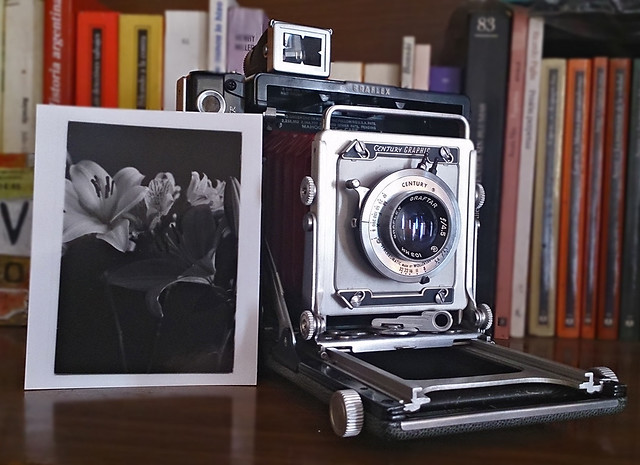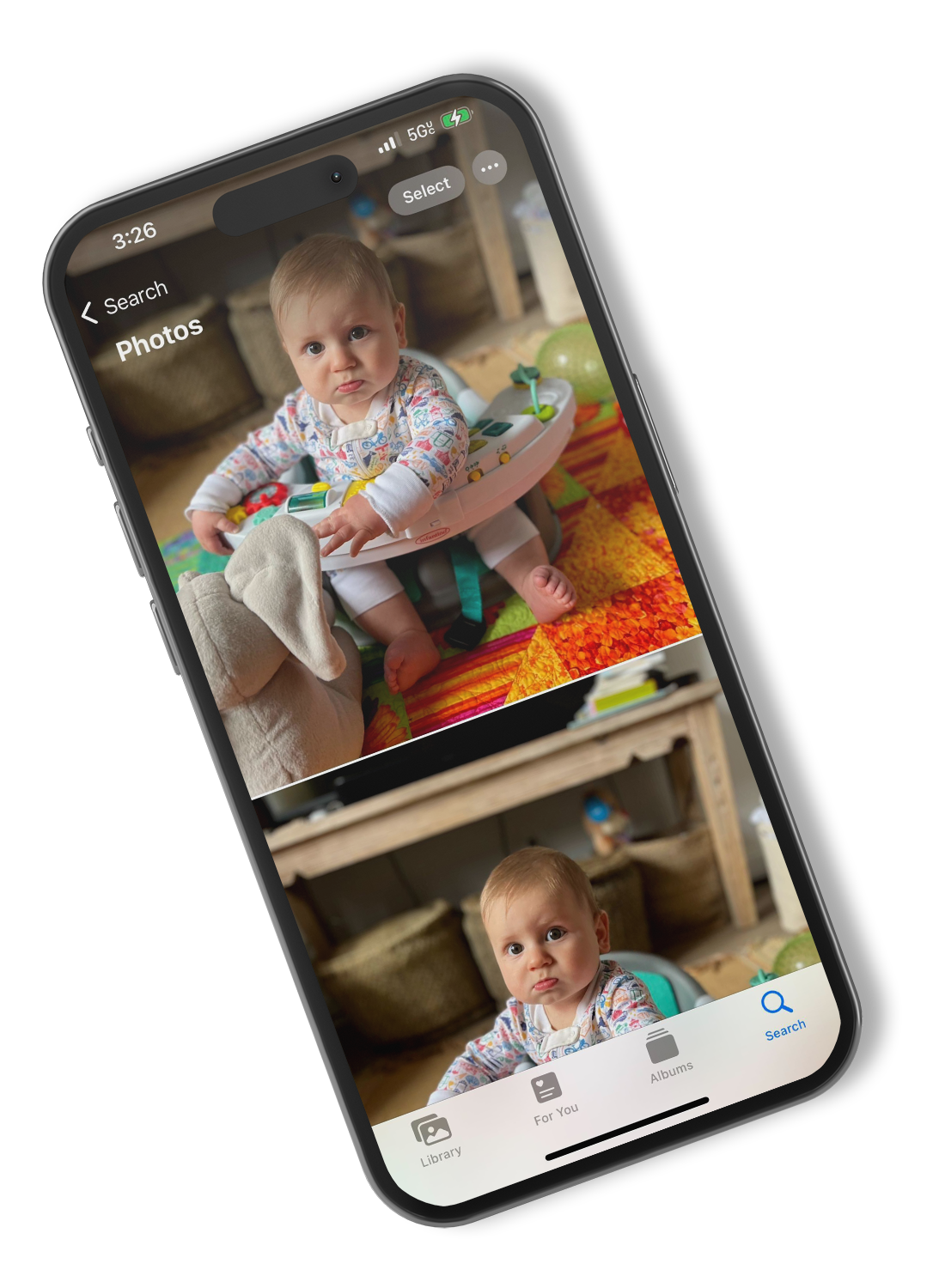This a basic guide to the most common types of photo prints. You'll learn what C-Prints are, how they compare to Giclee and the pros and cons of each.

Photo by Guillermo Perez
Oh yeah. Prints.
Remember printing? Instagram and Facebook are great for sharing your photos but prints are something special. It used to be if you wanted to see your image, you needed to make a print, and that print had to be good. Printing was always the final stage in image making. Now that everyone and their grandma works digitally, the emphasis on prints has taken a back seat to filters and sharing, but it doesn't have to be that way.
Printing is printing... right?

Photo by Laura D'Alessandro
No. There are possibly hundreds printing methods from Wet Plate Collodion to Dye Sublimination. What we're going to focus on here are C-Prints (Chromogenic Prints) and how they're different from Inkjet (Giclee) Prints. These are the most common types of photo prints and we'll go into the strengths and weaknesses of each type.
A Little History:
The earliest photographic techniques relied on chemicals applied directly to the final image surface. Meaning that the camera exposed an image onto a material (usually glass) that became the final image. There was no sensor, no negative, no in-between step from the actual moment to the final image; and because there was always only one original, making copies wasn't easy.

Tintype from simpleinsomnia on flickr
In 1889 George Eastman developed the first modern roll film. An unbreakable (goodbye glass!) film that could shoot many images, stored easily, and could be used to make prints. This was pretty revolutionary stuff for photographers at the time and ushered in the modern era of photography.
Once Kodak film arrived on the scene, it became a lot easier to create prints in a variety of sizes and in large number, this was the 19th century equivalent of the digital revolution.
What's a C-Print?
The term stands for Chromogenic Print, a print capable of creating color, and doing so chemically rather than mechanically. Instead of engraving plates that transfer ink, or spraying pigments onto paper, C-Prints create images at the molecular level. They are the prints that old-school film photographers grew up with developing in the dark room. Chromogenic prints are the classic format for photography and because of this they have a proven track record of image resolution, tonal reproduction, and image stability.
These are kinds of photo prints that most people are familiar with and what people expect when they get a photo. Because C-Prints are done in a chemical bath they're durable and waterproof. Because they develop at the molecular level, they're very resistant to fading over time compared to other methods. Since the chemistry happens inside the paper itself they're typically more scratch resistant than other prints.
How are they made?
C-Prints these days are printed on a machine called a Digital Minilab. What used to take up an entire room or building filled with people and machines is now essentially an overgrown and highly sophisticated office printer. Properly calibrated and maintained a Minilab can produce thousands of perfectly matched, high resolution, fade free images that will last for years.
Inside the machine there's a cartridge with a roll of photo-sensitive paper that gets cut to size, exposed to light, and developed.

Photo by Jared Tarbell
(Note: This not what it really looks like inside a Minilab. But... LASERS!)
- RGB lasers project a digital image directly onto the paper, causing a chemical reaction deep inside that creates the image.
- The result is a perfectly dotless image with smooth gradients and tones, and because it the chemicals in the paper react at the molecular level there's absolutely no visible ink drops or pixels.
- The paper passes through a series of chemical baths, just the same as in a darkroom, developing and fixing the image. Out comes a fresh print that can last for 100 years or more.
C-Print Pros:
- Color consistency. A well calibrated machine operated by a good technician means you can get very consistent images day after day.
- Durability. A quality C-Print on archival paper that's kept under good conditions can last 100 years or more.
- Image Quality. It's very tough to beat a quality C-Print for quality. Only the very best Giclee methods come close.
C-Print Cons:
- Size. It's usually very difficult and expensive to get them done at sizes over 12x18. Most machines won't accept paper that large and so those prints have to done with other methods.
- Initial Setup. Some units cost as much as $100,000 plus thousands in supplies and chemicals, and you need trained technicians to operate them. You probably won't be buying your own Minilab any time soon.
What's Giclee?

Photo by frankieleon on flickr
Giclee is a fancy word for inkjet. The same kind of inkjet printing that you do at home from that $99 printer you got at the office supply shop. Higher end Giclee prints use more expensive printers, more expensive ink or pigments, and more expensive paper and production techniques.
With Giclee a very big roll of paper is fed into a printer that has anywhere from 4 to 16 inks or pigments and a precisely controlled print head. The print head makes several passes and sprays a fine mist of ink onto the paper, usually doing separate colors on each pass. At the end the ink on paper dries and sometimes this is sprayed with an extra chemical to increase weather resistance.
Giclee has some strengths that make it a better choice when it comes to certain kinds of prints. Large print sizes, fluorescent inks, printing on weird materials like wood, are all much easier with Giclee. If you're doing billboards or posters then you're typically going to want to find a good large format printer.
There are limits too though, and Giclee has it's own quirks that can make it a tricky choice for some.
The biggest is consistency. These machines require constant calibration and maintenance by skilled technicians just to print the same colors the same way each time. Even small changes in things like humidity and temperature and even barometric pressure can drastically affect the quality of a print.
Let's say you ordered portrait prints of someone wearing a pink shirt standing against a turquoise background. Because of the way a Giclee image is formed (microscopic drops of ink that have to stick to paper and then dry) the weather alone can have a huge impact on the way those colors come out.
Drops of ink could clump together because of static electricity in the air. Ink might take too long to dry because of humidity and therefore soak into the paper more deeply. Or adjacent color droplets might mix together more freely due to changes in surface tension. Any number of factors could affect the final look of the image simply because more of the imaging pigment is exposed to the atmosphere.
Giclee Pros:
- Size. Giclee is great for big prints, 24x36 and up easy, and that makes it great for things like billboards.
- Material. If you want to print on brushed aluminum or other non-standard materials then Giclee is your best bet.
- Specialty Colors. Things like white ink and fluorescent ink are possible with Giclee that just can't be done with C-Prints, this is why they're most often used for posters.
Giclee Cons:
- Printing At Home. For some this is a perk, but for many it quickly becomes more hassle thant it's worth. Even for cheap printers, ink can be very expensive, and it gets only more expensive for high quality printers.
- Maintenance. Not just of the print which, often, isn't as durable as a C-Print but of the machine too. If you're printing at home the time you have to invest in cleaning print nozzles and calibration can be overwhelming.
- Quality. Most Giclee prints you will find online do not use the high-end printers and expensive materials that produce high quality prints. Dots may be visible and your prints may fade over time.
Summary:
C-Prints are the traditional standard of quality for photographic images. They are long lasting, produce beautiful images, and are highly durable. We feel that they're the best choice for family photos and important events you want to preserve. Giclee is still good, but better suited to poster size prints and graphic arts. There are of course hundreds of different ways to print your photos, we've only covered the very basics of two different formats here but feel free to leave your feedback.
















